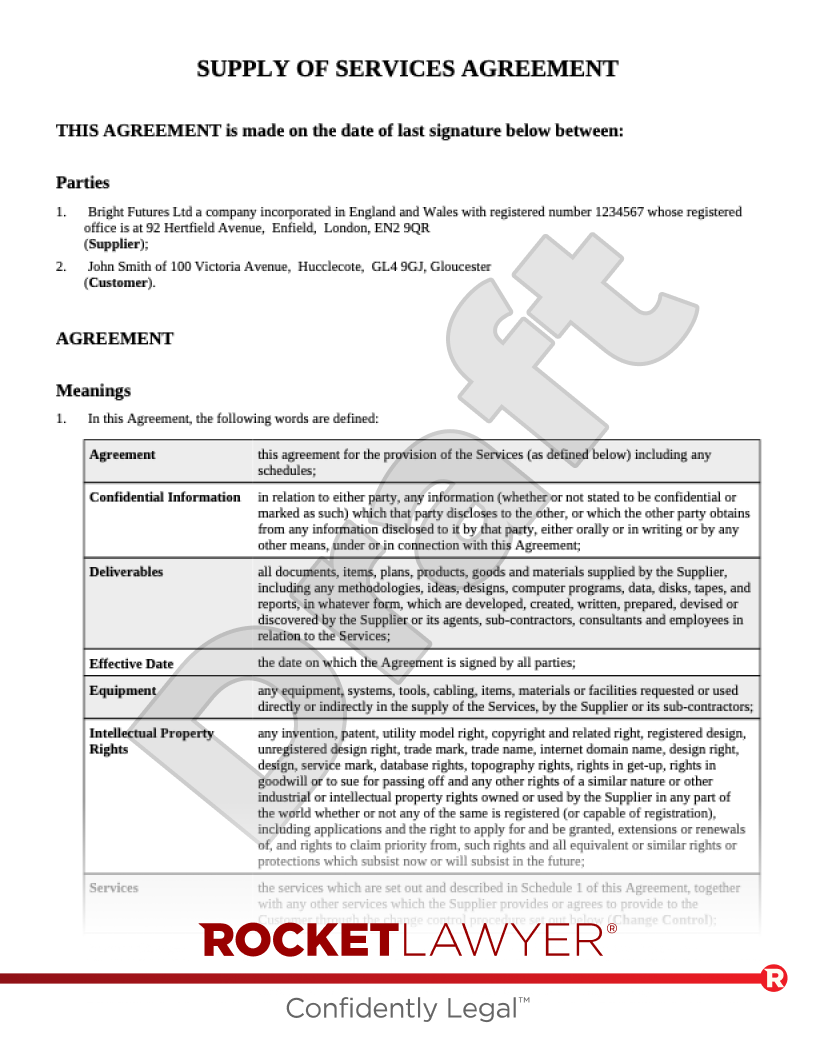A service level agreement (SLA) is not the same thing as a services agreement. Service level agreements are separate contracts between a supplier and a customer, which supplement a Services Agreement.
SLAs define the level of service expected from the service provider. For example, the expected volume, quality, speed, and efficiency of the work. This kind of information can alternatively be set out in the Specification of Services Schedule, which is a part of the Services Agreement itself.
It’s a good idea to include this information in either an SLA or the Specification of Services Schedule, as it helps the parties to establish a mutual understanding of the level of services to be provided. This helps them to avoid disappointment and potential disputes later on.
Should I use an SLA or just include this information in the Specification of Services Schedule?
Service agreements are long-term agreements between the parties, which set out multiple terms dictating all aspects of how services will be provided during the whole of the contract. They can include terms on service quality and similar.
An SLA focuses on the performance measuring and service quality terms agreed to by both parties. It may be used as a measurement tool to supplement a Services Agreement.
Having a separate SLA allows the parties to revise the SLA if they want to make changes, without having to revise the main Services Agreement. It is, therefore, usually a good idea to use an SLA to provide flexibility and efficiency down the line. For instance:
-
revising the whole Agreement could open the door to negotiating other variations that one party doesn’t want to deal with
-
the Services Agreement might last for a long time (eg 4 years), while the SLA may have a requirement for regular review (eg quarterly). Reviewing an SLA regularly rather than the whole Services Agreement reduces administrative burden
SLAs tend to be unique to particular situations. Ask a lawyer if you would like help making an SLA.
For more information, read Service level agreements.




